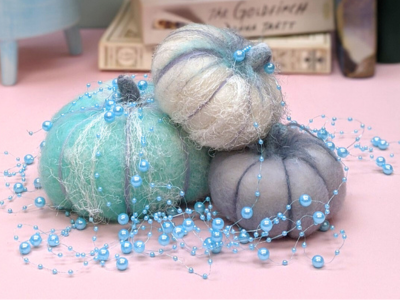Hi, I am Sandy and I have been teaching people to needle felt since 2014 and ‘what needle felting wool should I use’ is one of the most common questions. Choosing what wool is best for needle felting feels a bit like trying to explain the offside rule? You sort of get it… until you try to put it into words, then it all unravels.
If the thought of ordering needle felting wool brings you out in a cold sweat or, if you have ever hovered over that “add to basket” button wondering if you are about to order the wrong wool, you’re definitely not alone. The whole tops-versus-roving thing has been confusing needle felters for years. Add in carded wool and batts and you have got yourself a full-blown wool identity crisis.

The biggest problem, especially for new needle felters, is understanding the differences and in just a few minutes, I will have you ordering with confidence and you can finally wool-induced trauma can finally be put to bed. And definitely no more trying to explain the off-side rule.
Watch The Quick Tutorial
Wool Tops and Roving – Are They the Same?
You will be relieved to know that, for the main part, yes. If you order wool tops, or roving, you are almost 100% going to get the same product – see, you feel better already. In the UK, if you see wool roving for sale in a genuine needle felting shop, you are almost certainly going to get wool tops. Some shops call it roving, some call it tops, and some (like me) say “wool top/roving” just to cover all bases. The names are used interchangeably but mean the same thing as far as making a purchase is concerned.

So Why Are They Called By Different Names
Historically, traditional roving used by spinners is different. It is carded, and then the fibres are aligned, and usually contains small bits of vegetable matter. The fibres are shorter, coarser, and sometimes the roving itself looks flatter in photos.
In the UK, you will rarely see “traditional” roving unless you are ordering from a spinning-focused supplier. In the US, it is a little more common, so always check photos for those tell-tale signs of little bits and shorter fibres.

What’s The Difference Between Carded Wool, Batts, And wool Tops
And What Are They Used For?
Now we can forget about roving (because we know it is almost always a wool top) and talk about carded wool.
Carded Slivers (Sly-vers) – The wool fibres are carded in lots of different directions, making it lofty, airy, and light. It is then processed into long rope like lengths (slivers). Great for building up shapes, wrapping wire armatures, or creating soft, bulky cores.


Carded Batts – the same wool as slivers, but processed into large, flat sheets. Perfect for covering large areas quickly, like big pumpkins, animal coats, or as a base for flat-felted pictures. You can tear off small pieces for detailed colour blending too and they are especially good for needle felted pictures.


Wool Tops – Combed (not carded) so all the fibres lie in the same direction.

They are smooth, clean, and ideal for:
- Adding a detailed top coat to animals (Highland cow, dogs, cats etc.)
- Sections where you want a different finish, like a chicken’s tail or greenery in a felted picture
- Certain textures, such as cactus spikes, where aligned fibres give a more realistic effect

When wool tops are pulled apart they are smoother, straighter, and longer than carded wool, which has much shorter fibres. Some wool tops are much coarser than others and that is due to the Micron count – The thickness and texture of each wool fibre which varies from sheep to sheep. For example: Merino is very fine, and Jacob is much thicker and coarser. Find out more about wool types, and sheep breeds HERE.

Which Wool Should You Choose?
For most beginners, carded wool is the easiest to start with. It tangles quickly and gives a more forgiving finish. Wool tops can be introduced as you build confidence, especially for surface details and smooth coats.
The best part? You can mix and match within one project. Your core might be coarse carded wool, your top layer could be a smooth wool top, and your decorative details might come from tiny pieces of carded batt.

Summary
If you are in the UK and you see “wool roving” for sale, it is almost always wool tops. In the US roving is still likely to be wool tops but check photos and look for shorter fibres and bits of vegetable matter. Once you know what to look for, you will never second-guess a wool purchase again.
Complete Guide To Needle Felting Wool
Links and Resources
Watch the video tutorial: Wool Tops vs Roving for Needle Felting – Mystery Solved
Needle Felting Patterns – Over 60 patterns ready for instant download:
Browse patterns here
Join my beginner-friendly online course – Felt Hub Foundations gives you step-by-step guidance, exclusive patterns, and lifetime access:
Find out more here







